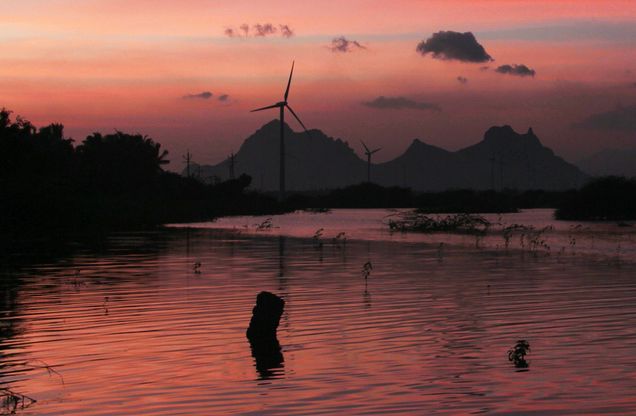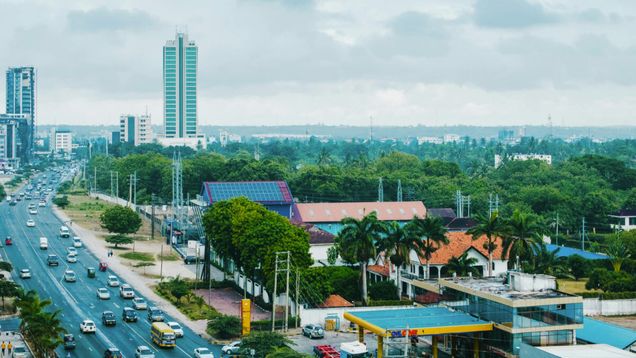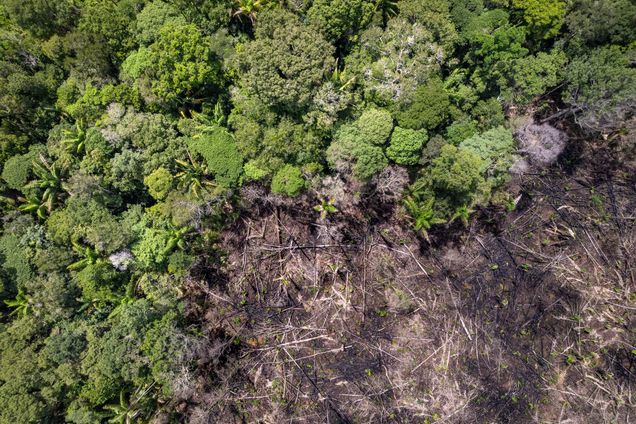GDP Center Round-Up: 2024 International Monetary Fund/World Bank Group Annual Meetings

The 2024 International Monetary Fund (IMF)/World Bank Group Annual Meetings will take place from October 21-27 in Washington, D.C. amid severe debt distress, lagging efforts to align global economic governance with modern realities, and a ticking clock to keep global climate and development goals alive. Several policy issues with important implications for this global context will be high on the agenda at this year’s Annual Meetings, including replenishing the International Development Association (IDA) and implementing institutional reforms at both the IMF and World Bank.
First, the Annual Meetings are a vital last opportunity to put wind in the sails of the replenishment of IDA—the arm of the World Bank that provides finance to low-income countries—before the replenishment concludes later this year. At a time when more money is flowing out of developing countries than flowing in, IDA is a vital source of financing to low-income countries. Not only will the replenishment serve as a test of donors’ commitment to international cooperation—not to mention the World Bank’s resolve not to harden terms on borrowing countries if donor countries come up short—but the IDA replenishment is also part of a broader set of interlinkages with the upcoming 29th United Nations (UN) Climate Change Conference (COP29) in Baku, Azerbaijan. This is particularly important given that a new climate finance goal will be decided at COP29, and research shows that multilateral development banks (MDBs) are the biggest source of climate finance under the existing goal.
Second, this year marks the 80th anniversary of the Bretton Woods Conference that created the IMF and World Bank. Given this momentous benchmark, and the scale of the challenges facing world leaders, all eyes are on the institutions’ willingness to evolve—and the potentially limited outcomes of these meetings may serve as a barometer of that willingness. The launch of the World Bank’s evolution process two years ago led to a series of positive reforms, but the scale and quality of World Bank finance continues to fall short of global needs and momentum appears to be slowing—unless the Group of 20 (G20), whose finance ministers and central bank governors will meet during the Annual Meetings, can inject some energy by setting targets for improving operational effectiveness and accelerating the scaling up of World Bank financing.
Finally, despite some shortcomings on the World Bank side, its pace of reform still exceeds that of the IMF. While the IMF has taken steps to better integrate climate change into its work, these fall short of the transformation needed to align the IMF with climate and development goals. The start of IMF Managing Director Kristalina Georgieva’s second term, in combination with the 80th anniversary of Bretton Woods, could provide an occasion for ambitious changes. The IMF has already shown some willingness to evolve this fall with the recent announcement of a reduction in surcharges and other charges—a good step that must be accompanied by a much broader suite of reforms.
Below, find the latest research from the Boston University Global Development Policy Center (GDP Center) on reforms for a climate-transformed IMF, the impacts on developing countries of IMF surcharges, how to make debt sustainability analyses work for climate and more.
IMF 2030: A Transformative Action Agenda for Achieving Climate and Development Goals

With just six years until 2030, there is an urgent need to unlock investments and mobilize affordable climate finance in a fiscally sound and financially stable manner.
Proposals to reform the international financial architecture to align it with shared development and climate change goals all involve reforms to the IMF. Yet, despite notable recent strides, ambition to integrate climate at the Fund remains limited.
A new report from the Task Force on Climate, Development and the IMF pushes for a faster and deeper evolution of the IMF that is both development-centered in its approach to climate and embraces an investment push as a priority goal. It presents three core policy recommendations animated by an IMF 2030 Action Agenda, comprised of concrete reforms to be implemented over the next 12 months.
The report calls on IMF Managing Director Kristalina Georgieva to lead this effort and for the Fund to report on the status of progress at the 2025 IMF/World Bank Annual Meetings. Read the report and read the summary blog.
Reforming the IMF Surcharge Rate Policy to Avoid Procyclical Lending

The IMF levies surcharges, or extra fees, on borrowing member countries whose debt has exceeded a certain threshold, on top of standard fees and interest rates.
Reportedly designed to discourage the overuse of Fund resources and ensure the IMF’s financial soundness, surcharges have been scrutinized in recent years for two reasons. First, such surcharges are inherently procyclical, as they increase the burden of debt payments at exactly the time when a member country is in need of counter-cyclical and low-cost financing, contravening the very rationale of the IMF. Second, IMF surcharges have become among the largest sources of revenue for the IMF, creating a situation whereby the most economically disadvantaged member countries are a major source of income for Fund operations.
A new Think 20 (T20) policy brief by Kevin P. Gallagher, Martin Guzman, Joseph E. Stiglitz and Marilou Uy reviews the rationale for IMF surcharges and evaluates their impact on member country economies, ultimately calling for their elimination. A new open letter signed by 150 preeminent economists also calls on the IMF to reform its surcharges and interest rate policies. Read the policy brief and read the open letter.

Since 2020, African countries have found themselves at the epicenter of a ‘polycrisis.’ The onset of the COVID-19 pandemic, the globalization of inflation and subsequent interest rate hikes, as well as worsening climate shocks and the impact of rising geopolitical tensions, have left nations in a highly vulnerable position.
While these external shocks have attracted attention, many African countries are silently struggling with dangerously large debt burdens. The external sovereign debt of African nations has increased by 240 percent between 2008-2022 and the intertwined challenges of climate vulnerability and unsustainable debt threaten to derail Africa’s development trajectory.
A new policy brief from the Debt Relief for a Green and Inclusive Recovery (DRGR) Project details the challenging debt dynamics facing African nations and outlines several solutions that would improve their fiscal capacity to address the climate emergency and embark on a sustainable growth pathway. Read the policy brief and read the summary blog.
The International Monetary Fund and Deforestation: Analyzing the Environmental Consequences of Conditional Lending

International financial institutions (IFIs) have in recent years increased the volume of their financing in an effort to support national and global policy challenges—yet surprisingly little is known about the environmental impacts of their finance.
A new technical paper from the Task Force on Climate, Development and the IMF investigates the environmental implications of the IMF’s lending toolkit by documenting its advice on forest management and examining the association between IMF programs and deforestation. It finds that each IMF loan is, on average, associated with a decrease in forest area of 258km2, almost the size of the Maldives. Read the technical paper and read the summary blog.
Room to Grow: Integrating Climate Change in Debt Sustainability Analyses for Low-Income Countries

Developing countries need to invest heavily to transform their economies to achieve sustainable development and address climate change, but they are falling behind in the shift to clean energy, enhancing adaptation and resilience, addressing loss and damage, and restoring nature.
To meet these policy goals, debt sustainability analyses (DSAs) conducted by the IMF will be critical. The DSA serves two major functions. First, the DSA provides an assessment of the debt sustainability risks faced by a country. It quantifies the available “fiscal space” for additional borrowing conditional on a sustainable debt burden. Second, the DSA helps to inform debt restructuring needs when countries undertake debt treatment.
A new policy brief from the Task Force on Climate, Development and the IMF provides actionable insights to improve the IMF/World Bank Debt Sustainability Framework for Low-Income Countries (LIC DSF) to guide climate-related investment decision-making in LICs, with a view to support growth and mobilize investments in a fiscally sound and financially stable manner. Read the policy brief and read the FAQ blog.
The Bretton Woods Institutions at 80: Towards A Bigger, Better and More Inclusive Global Economic Governance Architecture

July 2024 marked the 80th anniversary of the Bretton Woods Agreement that established the post-World War II multilateral economic order, including the IMF, the precursor to the World Bank, and early global trade governance systems that provided the structure and form of the World Trade Organization (WTO), established in 1995.
A flagship report by William N. Kring, Rishikesh Ram Bhandary, Rachel Thrasher, Marina Zucker-Marques and Tim Hirschel-Burns synthesizes the work of the GDP Center on global economic governance focused on the Bretton Woods institutions across three key pillars of financial stability, development finance and trade.
Building on GDP Center research, this report outlines key global economic governance reform proposals to ensure a bigger, better and more inclusive Bretton Woods System in the coming decades. It identifies areas needing reform to accommodate existing economic realities, pathways to improve global economic governance architecture and ensures that there are sufficient resources to foster financial stability and development; improve the functioning of the global economic governance system; and increase voice and representation for emerging market and developing economies (EMDEs) within these institutions. Read the report and read the summary blog.
Towards a More Robust and Equitable Global Financial Safety Net

Many have called for the international financial architecture to ensure a more equitable and resilient Global Financial Safety Net (GFSN), or the set of institutions tasked with providing emergency liquidity assistance to countries in need.
While the IMF’s 16th General Review of Quotas resulted in an increase of IMF quota resources, the additional resources will replace borrowed ones, leaving IMF’s lending capacity unchanged. Furthermore, the additional quotas are to be allocated equi-proportionally, without adjusting for the growing importance of EMDEs in the global economy.
In a new T20 policy brief, William Kring, Marilou Uy, Rakesh Mohan and Laurissa Mühlich navigate these fundamental shifts in the global economy, arguing for an adjustment of the Fund’s quota formula to ensure better access to resources and more equitable governance. They present three key policy recommendations to ensure that the GFSN is sufficiently resourced, quota-based and equitably distributed as well as providing voice and representation to all countries. Read the policy brief.
Defaulting on Development and Climate: Debt Sustainability and the Race for the 2030 Agenda and Paris Agreement

EMDEs are facing conditions that inhibit their ability to mobilize investment for shared development and climate goals, including historic levels of external debt, higher interest rates and low growth prospects to 2030.
The Independent Expert Group to the Group of 20 (G20) estimates that EMDEs excluding China will need to mobilize $3 trillion annually, $1 trillion from external sources and $2 trillion domestically, by 2030 to achieve the 2030 Agenda and the Paris Agreement.
A new report by the DRGR Project performs an enhanced global external DSA to estimate the extent to which EMDEs can mobilize the G20 Independent Expert Group recommended levels of external financing without jeopardizing debt sustainability.
They find that of 66 economically vulnerable EMDEs, 47 EMDEs with a total population of over 1.11 billion people will face insolvency problems in the next five years if they seek to ramp up investment to meet climate and development goals. Read the report and read the summary blog.
*
Never miss an update: Subscribe to the Global Economic Governance Initiative Newsletter.